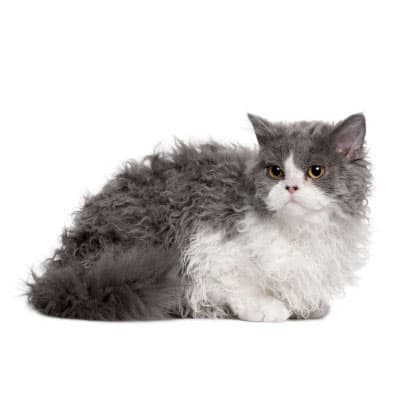Discover your cat's connection to this breed and 20 others


Discover your cat's connection to this breed and 20 others



This naturally curly cat is often referred to as "the cat in sheep's clothing". Sporting a plush, woolly, and dense coat in a wide range of colors and patterns, the Selkirk Rex is an affectionate teddy bear of a cat that can't wait to be welcomed into your home.
The Selkirk Rex is a medium to large cat with a heavy-boned frame. Their muscular bodies and soft, curly coat lend to their distinct look and presence that is hard to ignore. They have round, broad heads with full cheeks and wider set ears of medium size. Their eyes are large and round that come in a wide range of colors.
The beginning of this breed occurred in the 1980s in the United States. Montana-based breeder Jeri Newman stumbled upon a unique kitten belonging to a feral cat. This kitten's curly whiskers and coat distinguished it from the rest of its litter mates, and Newman decided to adopt the fuzzy little feline. DePesto, as the kitten was named, mated with a Persian named PhotoFinish of Deekay, and their six kittens became the foundation of the Selkirk Rex that we know today.
The Selkirk Rex is a loving companion who will cuddle by your side as much as possible. They enjoy the company of their humans and enjoy engaging in play. They are also known to take well to leash training. They are known to be on the mellower side, with an overall quiet demeanor and calm presence. While it could be said of all cats, napping is one of their favorite pastimes. They are a good addition to families with children, and typically get along with the right dog or cat that also operates on a more relaxed wavelength.
The Selkirk Rex can share some of the health issues that are associated with some of the breeds with which they share history, such as the British Shorthair and Persian breeds. This means that the Selkirk can be at a higher risk for developing polycystic kidney disease (PKD), which is more common in Persian cats, and hypertrophic cardiomyopathy (HCM), the most common form of heart disease found in cats. The Selkirk Rex can sport short or long hair, but their locks are always curly. The longhaired Selkirk typically displays looser curls than the shorthaired. They do need special grooming to keep their curls from matting and to regularly remove loose hairs from their coat. Bathing is also an important part of their care to keep their coats tangle-free and healthy.
At-home oral health routines such as brushing the Selkirk Rex's teeth weekly are important, as are annual professional dental cleanings at the veterinarian.
"Curly hair, don't care!" With a laid-back attitude and beautifully wavy locks, this is yet another endearing phrase that has come to be connected with the Selkirk Rex.
Cat Fanciers' Association (CFA) Status. While the Selkirk Rex gained Championship status with The International Cat Association (TICA) in 1994, it wasn't registered with the CFA until 1998, eventually gaining CFA Championship status in 2000.
Kitten sometimes go bare-coated! Selkirk Rex kittens that have their curly at birth may lose their coat before developing their adult curly coat around 8-10 months of age.
The International Cat Association (TICA) “Introduction to the Selkirk Rex Breed ”
Recommended by top vets with decades of experience
21 breeds
64 genetic health markers
50 genetic trait markers
